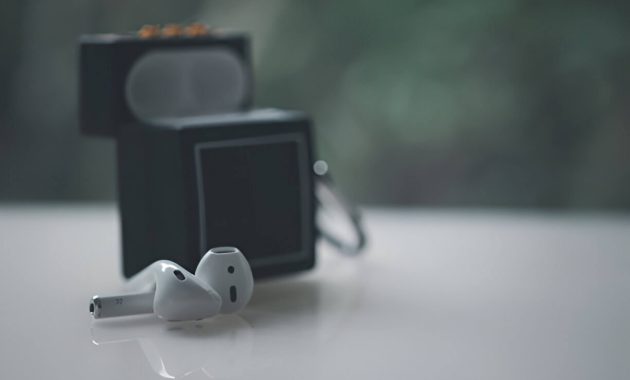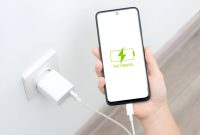In the age of wireless audio, Apple has introduced a game-changing feature for iPhone users: Audio Sharing. This innovative functionality allows two pairs of AirPods to connect to a single iPhone, enabling friends or couples to enjoy the same audio content simultaneously. As technology continues to evolve, this feature has become increasingly popular, offering a unique way to share music, podcasts, or videos without disturbing others. This guide will explore the process of connecting two AirPods to one iPhone, highlighting its benefits, limitations, and troubleshooting tips for a seamless audio-sharing experience.
Understanding AirPods and Audio Sharing
Audio sharing is a remarkable feature that has revolutionized the way we enjoy music and media with our friends and loved ones. This innovative capability, introduced by Apple for AirPods and select Beats headphones, allows two sets of compatible audio devices to connect to a single iPhone or iPad, creating a shared listening experience.
To utilize audio sharing, users need devices running iOS 13.1 or later, ensuring that the feature is accessible to a wide range of Apple enthusiasts. Compatible devices include various AirPods models, such as AirPods Pro, AirPods Max, and AirPods (2nd and 3rd generation), as well as select Beats headphones like Powerbeats Pro and Beats Fit Pro.
The beauty of audio sharing lies in its simplicity and versatility. Whether you’re watching a movie together on a long flight, sharing a podcast during a commute, or introducing a friend to your favorite album, this feature enhances social connections through shared audio experiences. It’s a thoughtful addition to the AirPods ecosystem, reflecting Apple’s commitment to creating technology that brings people together in meaningful ways.
As we continue to explore the capabilities of our devices, features like audio sharing remind us of the potential for technology to enhance our daily interactions and create new opportunities for shared experiences.
Preparing Your AirPods and iPhone for Connection
Before you can enjoy the seamless audio experience of your AirPods, it’s essential to properly prepare both your AirPods and iPhone for connection. Start by ensuring your AirPods are charged and placed in their case. Next, check your iPhone’s settings to confirm that Bluetooth is activated, as this is crucial for the pairing process.
It’s also important to verify that your iPhone’s software is up to date, as newer versions often include improvements for AirPods connectivity. Similarly, make sure your AirPods have the latest firmware installed. While AirPods typically update automatically when connected to your iPhone, you can check the current firmware version in your iPhone’s settings.
If you’re using AirPods Pro or AirPods Max, consider enabling the Automatic Ear Detection feature for a more intuitive listening experience. This allows your AirPods to automatically play audio when placed in your ears and pause when removed.
By taking these preparatory steps, you’ll ensure a smooth and efficient connection process between your AirPods and iPhone, setting the stage for an optimal audio experience.
Step-by-Step Guide to Connecting Two AirPods to One iPhone
Connecting two pairs of AirPods to a single iPhone is a convenient feature that allows for shared listening experiences. Here’s a step-by-step guide to achieve this:
- Ensure both AirPods are charged and within range of your iPhone.
- Open the AirPods cases and place them near your iPhone.
- On your iPhone, go to Settings > Bluetooth and ensure Bluetooth is turned on.
- Tap on one pair of AirPods in the list of devices to connect them.
- To add the second pair, tap on the AirPlay icon in the Control Center or on the lock screen.
- Scroll down and select “Share Audio.”
- Hold the second AirPods case close to your iPhone with the lid open.
- When the second AirPods appear on the screen, tap on them to connect.
- Both pairs of AirPods should now be connected and ready for use.
If you encounter any connection issues, try resetting your AirPods by placing them in their case, holding the setup button until the light flashes amber, then white. You can also try restarting your iPhone or updating to the latest iOS version to resolve potential compatibility problems.
Remember, this feature is available on iPhone 8 or later models running iOS 13 or newer, and works with AirPods (2nd generation or later), AirPods Pro, and AirPods Max.
Using Audio Sharing Features on Your iPhone
The audio sharing feature on iPhones offers a convenient way to enjoy media with friends or family. With this functionality, you can connect two sets of compatible wireless headphones, such as AirPods, to a single iPhone. This allows both users to listen to the same audio simultaneously, whether it’s music, podcasts, or videos.
To utilize this feature, ensure that both sets of headphones are paired with your iPhone. Then, while playing audio, access the AirPlay menu by tapping the AirPlay icon or through the Control Center. From there, you can select both headphones to enable audio sharing.
One of the most useful aspects of this feature is independent volume control. Each listener can adjust their own volume without affecting the other person’s experience. This is particularly helpful when preferences differ or in situations where one person may need a louder or softer volume.
Switching between AirPods is also seamless. If you’re using your own AirPods and want to switch to a friend’s pair, simply put your AirPods back in their case and select your friend’s AirPods from the AirPlay menu. This quick transition makes it easy to share audio experiences without interruption.
Remember that audio sharing is compatible with various Apple and Beats headphones, expanding the possibilities for shared listening experiences on your iPhone.
Compatibility and Limitations of Audio Sharing
Audio Sharing is a feature that allows two sets of AirPods to connect to a single iPhone, enabling users to enjoy the same audio content simultaneously. However, it’s important to understand the compatibility requirements and limitations of this feature.
Supported AirPods models include AirPods Pro (1st and 2nd generation), AirPods (2nd and 3rd generation), AirPods Max, and select Beats headphones. Not all wireless earbuds or headphones are compatible with Audio Sharing, so it’s crucial to verify your device’s compatibility before attempting to use this feature.
iPhone compatibility is another key factor. Audio Sharing is available on iPhone 8 and later models, running iOS 13.1 or newer. If you have an older iPhone or are using an earlier iOS version, you may not be able to access this feature.
iOS version requirements play a significant role in Audio Sharing functionality. To ensure optimal performance and access to the latest features, it’s recommended to keep your iPhone updated to the most recent iOS version available for your device.
While Audio Sharing offers a convenient way to share audio experiences, it’s worth noting that some third-party apps may not support this feature. Additionally, the audio quality may be slightly reduced when sharing with two sets of headphones compared to using a single pair.
Tips for Optimal Audio Sharing Experience
Maximizing Your Audio Sharing Experience
To ensure the best possible audio sharing experience, consider these key factors:
- Battery Life Management:
– Fully charge your devices before extended use
– Monitor battery levels and have portable chargers on hand
– Adjust device settings to conserve power when necessary
- Audio Quality Optimization:
– Use high-quality audio files or streaming services
– Ensure your devices support advanced audio codecs
– Invest in good-quality headphones or speakers for better sound reproduction
- Range Considerations:
– Be aware of the maximum range of your audio sharing technology
– Position devices within optimal range for uninterrupted streaming
– Consider signal boosters or extenders for larger spaces
By keeping these tips in mind, you can enhance your audio sharing experience, ensuring longer listening sessions, superior sound quality, and seamless connectivity across devices.
Troubleshooting Common Issues When Connecting Multiple AirPods
Connecting multiple AirPods to a single device can sometimes present challenges. Here are some common issues and their solutions:
- Connection Problems: If one pair of AirPods isn’t connecting, try resetting them by placing them in the charging case, closing the lid, waiting for 30 seconds, and then reopening. If the problem persists, forget the device in your Bluetooth settings and reconnect.
- Audio Sync Issues: When using multiple AirPods, you may experience audio lag. To resolve this, ensure all AirPods are fully charged and try resetting them. If the problem continues, update your device’s operating system and the AirPods’ firmware.
- Device Recognition Errors: Sometimes, your device may fail to recognize all connected AirPods. In this case, turn off Bluetooth on your device, wait for a few seconds, and then turn it back on. This often prompts the device to scan for and recognize all connected AirPods.
- Switching Between AirPods: If you’re having trouble switching audio between different pairs, make sure you’re using the audio output selector in your device’s control center or settings menu.
- Interference: If you’re in an area with many Bluetooth devices, interference can cause connection issues. Try moving to a different location or turning off nearby Bluetooth devices.
By understanding these common issues and their solutions, you can troubleshoot most problems when connecting multiple AirPods, ensuring a smoother audio experience.
Alternative Methods for Sharing Audio on iPhone

While Apple’s built-in audio sharing feature is convenient, there are several alternative methods for sharing audio on your iPhone. Third-party apps offer a range of options for those seeking more flexibility. Apps like AmpMe and SoundSeeder allow users to synchronize music playback across multiple devices, creating a shared listening experience without the need for physical proximity.
For those who prefer a hardware solution, Bluetooth splitters present an excellent option. These small devices connect to your iPhone and can transmit audio to multiple Bluetooth headphones simultaneously, making them ideal for shared listening in various settings.
Wired options shouldn’t be overlooked, especially for users with older devices or those who prioritize audio quality. A simple headphone splitter can connect two sets of wired headphones to a single iPhone, providing a reliable and lag-free sharing experience.
Each of these alternatives has its own set of advantages, catering to different needs and preferences. Whether you’re looking for app-based solutions, wireless flexibility, or the reliability of wired connections, there’s an audio sharing method to suit every iPhone user.










